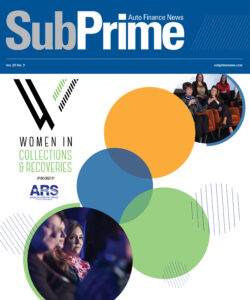CarMax Auto Finance not wary of being under CFPB jurisdiction

On the day CarMax Auto Finance completed the second quarter of its current fiscal year with a 6.2-percent increase in net income, the financing arm for the used-vehicle retailer came within the jurisdiction of the Consumer Financial Protection Bureau thanks to the larger participant rule.
When asked how this additional regulatory burden might burden CAF’s performance, CarMax chief financial officer and executive vice president Tom Reedy quickly tried to assuage any concern investment analysts might have held when the company held its quarterly conference call earlier this week.
“The larger participant ruling is out there, and frankly it was nothing of any surprise for us,” Reedy said. “There is no direct impact on our dealer operations, but as we expected all along, CarMax Auto Finance will be subject to the bureau’s supervisory authority, and what that means is we’ll be interacting with them in the future, as we were pretty certain.”
Previously, the bureau supervised auto financing at the largest banks and credit unions. Then as of Aug. 31, the CFPB’s rule extends that supervision to any nonbank auto finance company that makes, acquires or refinances 10,000 or more loans or leases in a year.
The CFPB announced this move back in June so Reedy reiterated that CAF had time to prepare.
“As far as what we’ve been doing, we’ve been paying careful attention to developments in the industry as we see new announcements and new actions by them,” Reedy said. “We’ve been assessing our practices as we see what we think are the expectations of the bureau, and we’ve been working hard to make sure that our compliance and program is up to snuff and will be ready for examination, if and when it comes.”
An examination would show what CarMax Auto Finance reported for Q2, which included $98.3 million in net income. The company also highlighted its average managed receivables grew 16.4 percent to $8.99 billion. The total interest margin, which reflects the spread between interest and fees charged to consumers and its funding costs, declined to 6.2 percent of average managed receivables from 6.6 percent in last year’s second quarter.
Officials also mentioned their allowance for loan losses climbed to $87.8 million in Q2, up from $77.8 million a year earlier.
“I think from the perspective of CAF, it was a straightforward, a boring quarter, which is what we like to see,” Reedy said. “That means everything is going as expected.
“If you remember, last quarter and, I believe, the quarter before, we had some but changes in our loss expectations, which were favorable and actually boosted income growth in those quarters,” he continued. “This quarter, we’ve seen loss experience come in as expected, right where we booked it, which is how we like to see things.
“There’s nothing different going on. It’s just a matter of we’ve seen losses come in exactly as we’d been planning on,” Reedy went on to say.

 View The Latest Edition
View The Latest Edition

